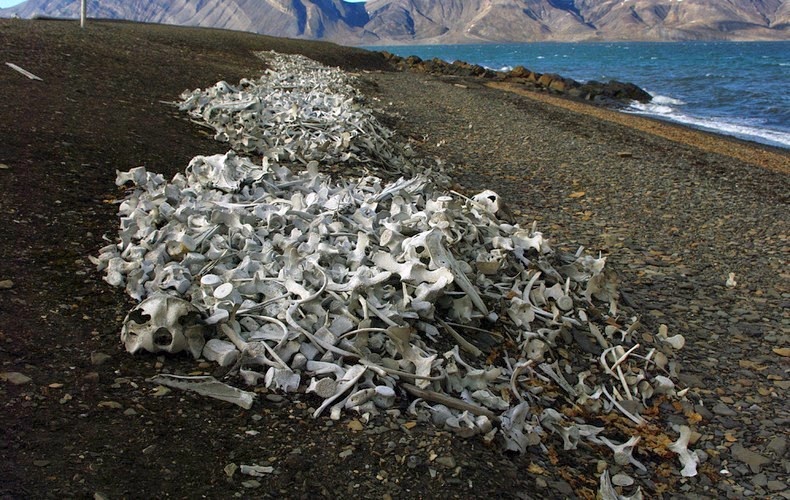The island of Spitsbergen, the largest and only permanently populated island of the Svalbard archipelago in Norway, was the site for extensive beluga hunting that began here in the 17th century and continued unabated well into the 20th century until the government started protecting the species in 1961. Most of the whaling stations were located on Van Keulenfjorden, a 30km long fjord on the west coast of Spitsbergen. Along headlands, beaches and bays, all the way to Bamsebu in Ingebrigtsenbukta, one can find remains of the large scale slaughtering that took place here. The most striking among them is the long white strip near the beach where thousands of beluga bones are piled up.
The beluga is a medium-size whale that lives primarily in the Arctic. Its white color is also the source of its name, which comes from the Russian word for “white”. Belugas were hunted for their meat, blubber and skin, and hunting has been carried out for centuries. Belugas were easy prey for hunters due to their predictable migration patterns and the high population density in estuaries and surrounding coastal areas during the summer months.
Around 1930 Ingvald Svendsen established a whaling station in Ingebrigtsenbukta, which is now referred to as Bamsebu. The station was built solely for the purpose of beluga whale hunting, and is the only remaining example of such a station in Svalbard. The station consists of the main building that served as living quarters, two small shacks, three boats on the beach and some equipment and hunting equipment, not to mention all the bones. There is a building called Kjeftausa which is upturned rowboat with a peat embankment just south-east of Bamsebu. It was probably used as food storage, but today the building is a monument to resourcefulness and re-use.
The heaps of whale bones on the beach is estimated to contain the remains of 550 beluga whales. These bones and the nearby boats are designated as cultural remains and as such are protected and may not be touched or removed.


Sources: Norwegian Polar Institute / Wikipedia






















Comments
Post a Comment